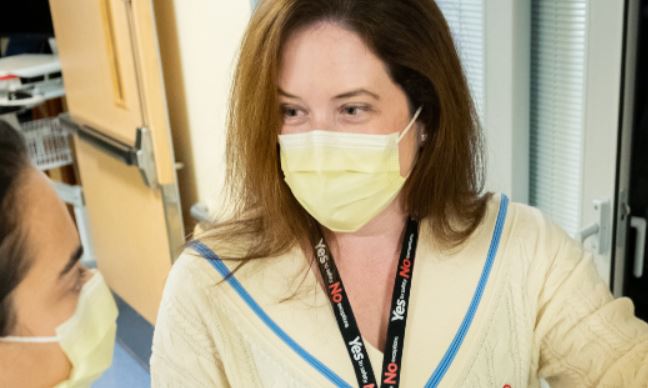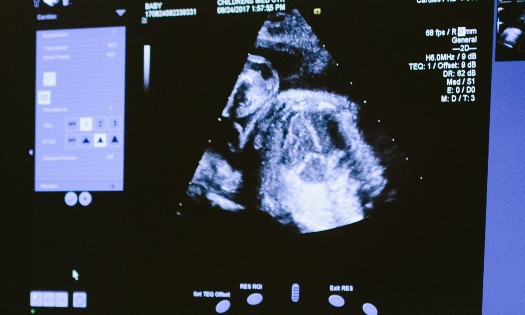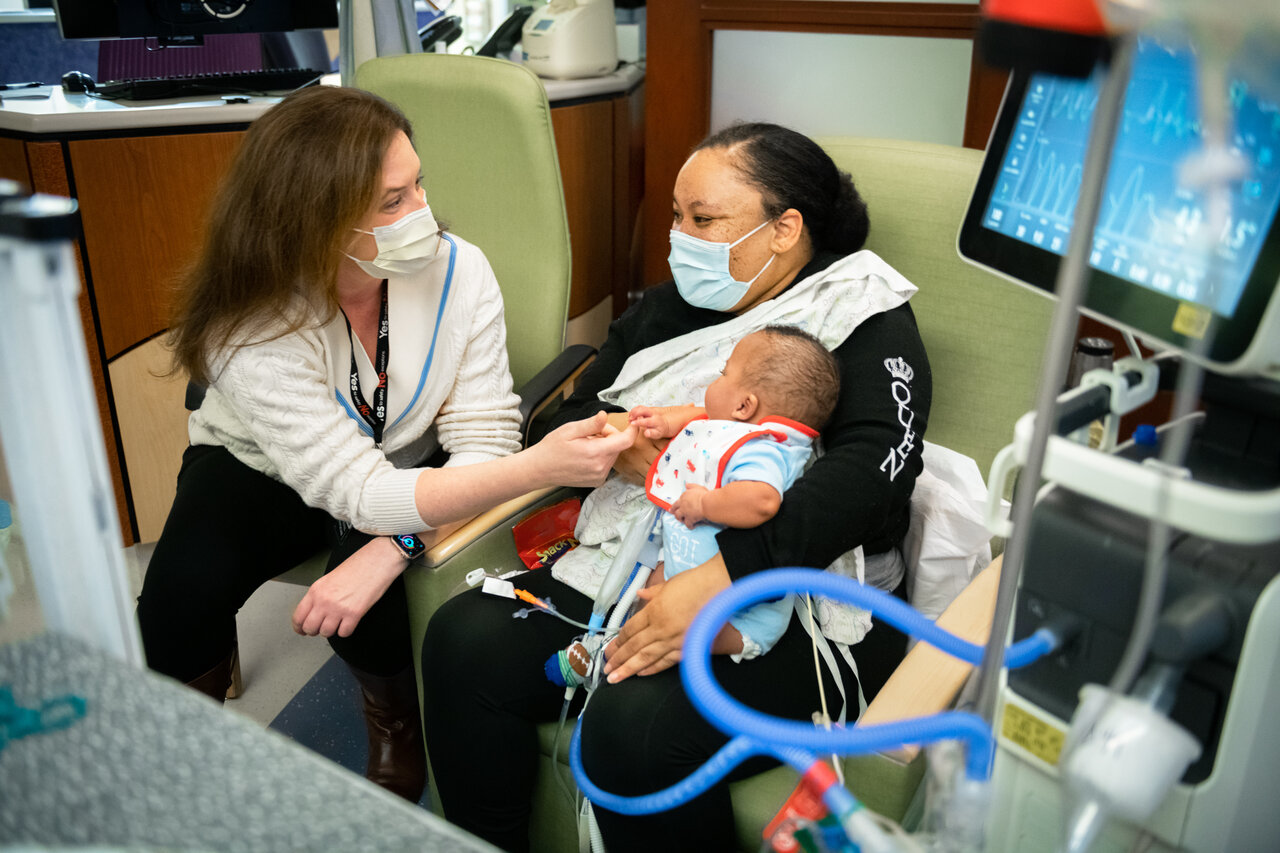For the last decade, the medical community has widely recognized hypertension as a distinct pediatric health concern, as opposed to a condition that only affects adults. A recent CDC study shows it affects 1 in 25 kids ages 12 to 19. Nonetheless, many providers struggle with the nuances of diagnosing it, including which tests should be standard and how to make use of 24-hour ambulatory blood pressure monitors (ABPMs).
Pediatric Cardiologist Alan Sing, M.D., and his colleagues at Pediatric Heart Specialists at Children’s Health℠ see nearly 1,000 hypertension patients each year. Dr. Sing has a special interest in this condition, giving regular hypertension lectures to family practice residents at nearby Methodist Charlton Medical Center and previously serving as a hypertension subspecialist in support of Montefiore Medical Center’s BP-CATCH project (Boosting Primary Care Awareness and Treatment of Childhood Hypertension), a clinical initiative to improve the diagnosis and management of pediatric hypertension in the community pediatrician’s office.
“With new definitions and several types, diagnosing hypertension can be difficult,” says Dr. Sing. “But getting it right gives kids a much better chance of avoiding cardiac events and enjoying better heart health as adults.”
Pediatric hypertension: a larger problem than previously measured
The American Academy of Pediatrics (AAP) redefined pediatric hypertension in 2017. Children 13 years and older now have the same blood pressure (BP) category definitions as adults. For children 12 years and under, their normal ranges continue to be based on percentiles as defined by their age, height and gender.
Other changes included renaming the blood pressure category “prehypertension” to “elevated blood pressure” and lowering the upper limit of this range (< 95th percentile). The AAP made these changes because patients in the upper end of the old “prehypertension” range still had higher rates of negative cardiovascular outcomes compared to patients in the lower end of the spectrum.
“Today, many kids who would have been diagnosed with prehypertension in the past are considered stage 1,” says Dr. Sing.
Another change was the population used to establish those percentiles. The prior cohort included a large number of obese children, which skewed the normative values upward. The new guidelines excluded obese children in the cohort – shifting the scale for “normal” blood pressure lower and, once again, resulting in more children being diagnosed with hypertension.
Says Dr. Sing, “Anytime you shift the goalposts, you change results. But these shifts don’t label kids as sick when they’re actually fine. They’re helping us identify patients who were slipping through the cracks before.”
For complete definitions and guidelines, review the AAP’s 2017 report in the journal Pediatrics.
Testing for types
Diagnosing hypertension can be complex because of its variable causes. The most common type of hypertension is called primary hypertension and is usually related to lifestyle choices like a poor diet, lack of exercise or being overweight. However, as part of any hypertension evaluation, Dr. Sing always orders lab tests to check for secondary hypertension, which is caused by other medical conditions.
“Many pediatricians refer to a specialist before ordering these tests, but they don’t have to,” he says.
Standard tests include a cholesterol panel, basic metabolic panel and a urinalysis. Dr. Sing also often orders a complete blood count, liver enzymes and thyroid studies. This collection of labs evaluates for a wide range of possible causes of secondary hypertension including renal, thyroid and endocrine abnormalities, as well as potential associated conditions like hyperlipidemia and hepatic steatosis.
Another cause of hypertension can be a congenital abnormality called coarctation of the aorta. Most commonly, this is a narrowing in the proximal descending aorta that can lead to elevated blood pressures in the upper extremities (proximal to the stenosis) compared to the lower extremities (distal to the stenosis).
Treatment often requires a catheter procedure or surgery. This is why Dr. Sing measures BP in the arm and lower leg for every patient.
“If you only check BP in the arm, you might miss the true cause and recommend the wrong treatment,” he says.
Better data through take-home monitors
Even the first step of confirming hypertension – getting consistently high BP readings – can be difficult. For example, some kids have low BP when they’re tested in the office but high BP otherwise, a condition called masked hypertension. More common is the opposite pattern, known as white coat hypertension.
Studies suggest white coat hypertension may account for as many as 40 to 50% of all pediatric hypertension cases. As a result, kids may receive BP medication they don’t actually need because their BP isn’t as bad as it looks.
“At the same time, white coat hypertension doesn’t mean a child is in the clear, because it can easily grow into sustained hypertension,” says Clarisa Garcia, M.D., Medical Director of Pediatric Cardiology Associates, a Children’s Health Care Network Partner.
To determine whether patients with erratic BP need treatment, Drs. Garcia and Sing require more data. They get it by using ambulatory blood pressure monitors (ABPMs), which are devices that children wear for a day or longer, and which record BP at regular intervals set by the team. The Children’s Health team usually sets them to take a reading every 30 minutes.
Based on those readings, the device calculates average BP and BP load – the percentage of readings above that crucial 95th percentile – both for the child’s waking hours and sleeping hours. This gives a much fuller picture of BP and eliminates readings that are artificially low or high because of how the child reacts to being tested.
“To be extra safe, we automatically throw out the first two hours of data, when the child may be getting used to the device,” adds Dr. Sing.
ABPMs do come with some challenges. They’re expensive to acquire, and patients often have to return them in person for the team to get the data. Finally, the normative values most clinicians use to interpret ABPMs do not align exactly with the BP categories defined by the new 2017 AAP guidelines. Physicians need to be aware of this discrepancy when interpreting the data.
Dr. Sing expects these wrinkles to smooth out in the coming years as the ABPM market grows and there is more of a push for updated normative ABPM data. However, his team already considers ABPMs indispensable for making accurate diagnoses and helping them identify the right lifestyle changes, medication or other treatments a child needs.
“We want to know as much as we can about a child’s condition, because the less time a kid spends with high blood pressure, the more they’re going to get out of their heart in the long term,” he says.
Learn more about the latest cardiology research at Children’s Health


